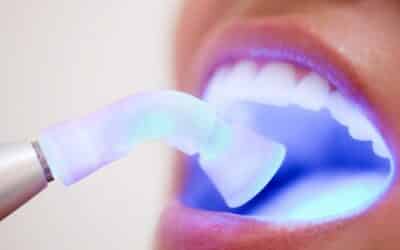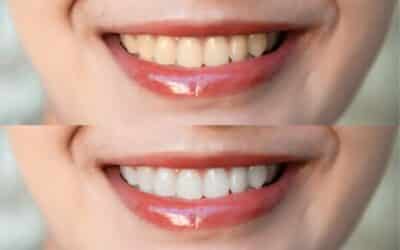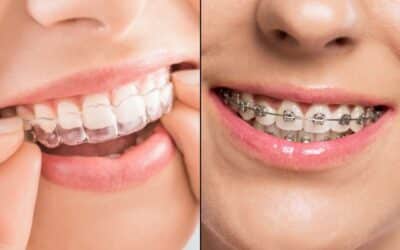A broken tooth can be both painful and distressing. Whether it happens suddenly due to an accident or gradually due to weakened enamel, seeking immediate dental care is crucial. A broken tooth not only affects your ability to chew and speak but can also lead to infections and further complications if left untreated. Fortunately, modern dentistry offers a variety of treatment options based on the severity of the damage. Understanding these options can help you make an informed decision about restoring your tooth and protecting your oral health.
Common Causes of a Broken Tooth
There are several reasons why teeth break, ranging from sudden trauma to long-term wear and tear. One of the most common causes is biting into something hard, such as ice, hard candy, or popcorn kernels. Additionally, accidents, falls, or sports injuries can result in broken or chipped teeth.
Tooth decay is another leading cause, as it weakens the enamel, making the tooth more prone to fractures. Teeth grinding (bruxism) is also a major contributor, as constant pressure on the teeth can wear them down over time, eventually leading to cracks or breaks. Large fillings, especially older ones, can also weaken a tooth’s structure and cause it to break under pressure. Lastly, as we age, our teeth naturally weaken due to years of use, making them more susceptible to fractures.
Types of Broken Teeth
The type of break determines the appropriate treatment. A craze line refers to a superficial crack on the outer enamel and is usually harmless, though it may cause some sensitivity. A chipped tooth is a minor break that affects only a small part of the enamel and does not usually require extensive treatment.
A cracked tooth extends deeper into the tooth and may cause pain when chewing. If left untreated, it can worsen over time. A fractured cusp occurs when a piece of the chewing surface breaks off, often around a filling. A split tooth is a more serious crack that extends from the top of the tooth to the root and often requires extraction. Finally, a root fracture starts below the gum line and is one of the most severe types of breaks, often requiring immediate intervention.
Best Treatment Options for a Broken Tooth
Dental Bonding for Minor Chips and Cracks
For small chips and cracks, dental bonding is an effective and minimally invasive solution. This procedure involves applying a tooth-colored composite resin to the damaged area and shaping it to match the natural tooth. Bonding is a quick and affordable treatment that can usually be completed in one visit. It restores the tooth’s appearance and function, though it may not be as durable as other treatments. Over time, the bonded material may need to be replaced due to wear.
Porcelain Veneers for Cosmetic and Structural Repair
When a tooth has a larger chip or crack that affects the front surface, porcelain veneers are an excellent option. Veneers are thin, custom-made shells that cover the front of the tooth, improving its appearance and protecting it from further damage. This treatment is ideal for those who want a long-lasting solution that enhances their smile while reinforcing the tooth’s strength. However, because a small amount of enamel must be removed to place the veneer, the procedure is irreversible.
Dental Crowns for Larger Breaks
If a tooth has sustained significant damage but still has a healthy root, a dental crown is often the best solution. A crown is a cap that covers the entire tooth, restoring its shape, strength, and function. Made from materials like porcelain, ceramic, or metal, crowns are durable and provide long-term protection.
The procedure for getting a crown typically involves two visits. During the first visit, the dentist prepares the tooth by reshaping it and taking impressions. A temporary crown is placed while the permanent crown is custom-made. On the second visit, the final crown is cemented into place, providing a strong and natural-looking restoration.
Root Canal Therapy for Deep Cracks or Infection
When a crack or break extends into the inner pulp of the tooth, root canal therapy may be necessary. The pulp contains nerves and blood vessels, and if exposed, it can become infected or inflamed, causing severe pain.
During a root canal, the damaged pulp is removed, and the inside of the tooth is cleaned and sealed. A crown is then placed to protect the tooth from further damage. Root canal treatment is highly effective in saving a broken tooth and preventing extraction. While some patients worry about discomfort, modern root canals are virtually painless and can provide long-term relief.
Tooth Extraction and Replacement Options
If the damage is too severe, and the tooth cannot be saved, extraction may be necessary. While this is often the last resort, removing a severely broken or infected tooth can prevent complications such as spreading infections or jawbone deterioration. Once the tooth is removed, there are several replacement options available.
1. Dental Implants: The Best Permanent Solution
A dental implant is widely regarded as the best long-term replacement for a missing tooth. It consists of a titanium post that is surgically placed in the jawbone, acting as an artificial tooth root. After healing, a custom crown is attached to restore the tooth’s appearance and function.
Dental implants are highly durable and can last a lifetime with proper care. They also help preserve jawbone density, preventing the bone loss that often occurs after tooth extraction. Unlike bridges or dentures, implants do not rely on neighboring teeth for support, making them the most natural and stable option.
2. Dental Bridges: A Non-Surgical Option
A dental bridge is another option for replacing a missing tooth. It consists of a false tooth supported by crowns on the adjacent teeth. While bridges are effective and less invasive than implants, they require altering healthy teeth to support the restoration. This makes them a good option for patients who cannot undergo implant surgery but still want a fixed replacement.
3. Partial Dentures: An Affordable Alternative
For those who prefer a removable option, partial dentures can replace one or more missing teeth. While they are a cost-effective solution, they may not offer the same stability and comfort as implants or bridges. Proper maintenance is necessary to ensure they remain in good condition and do not cause irritation to the gums.
How to Prevent a Broken Tooth
While some dental injuries are unavoidable, there are steps you can take to reduce the risk of breaking a tooth. Avoid chewing on hard objects like ice, pens, or fingernails, as they can put unnecessary stress on your teeth. If you play sports, wearing a mouthguard can help protect your teeth from impact-related injuries.
If you grind your teeth at night, consider using a nightguard to prevent excessive wear and fractures. Practicing good oral hygiene by brushing twice a day, flossing daily, and visiting your dentist for regular checkups can also help detect weak or decayed teeth before they break.
When to See a Dentist for a Broken Tooth
It is essential to seek dental care as soon as possible if you experience a broken tooth. Delaying treatment can lead to further damage, infection, and even tooth loss. If you have severe pain, sensitivity, swelling, or bleeding, contact a dentist immediately. Early intervention can often save a tooth and prevent the need for more complex treatments.
Conclusion
A broken tooth can be a serious dental concern, but with the right treatment, it can be repaired or replaced effectively. From simple bonding for minor chips to dental implants for more severe damage, modern dentistry offers a variety of solutions tailored to each patient’s needs.
If you have a broken tooth and need expert care, Dental Implants Orange County provides advanced restorative treatments to help you regain a healthy and confident smile. Contact us today to schedule a consultation and explore the best treatment options for your dental needs!




